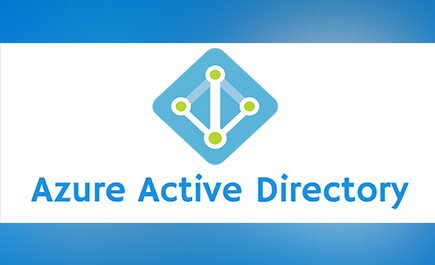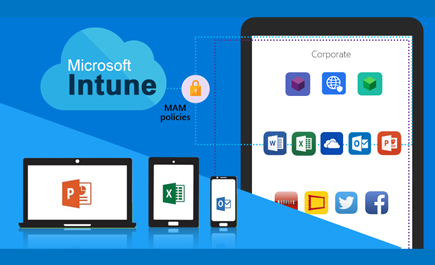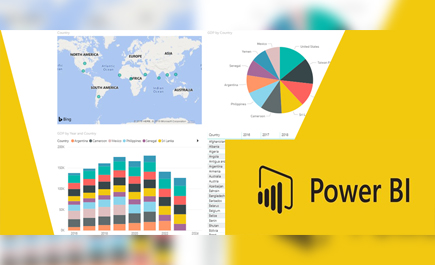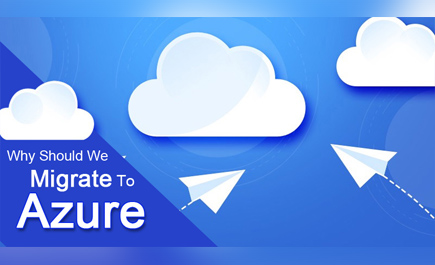Hybrid Cloud and Azure Stack - an opportunity for partnering
What is Hybrid Cloud?
Hybrid cloud is a cloud computing environment that uses a mix of on-premises, private cloud and third-party, public cloud services with orchestration between the two platforms. By allowing workloads to move between private and public clouds as computing needs and costs change, hybrid cloud gives businesses greater flexibility and more data deployment options.
What is the Azure stack?
Azure Stack is a hybrid cloud computing software solution developed by Microsoft based on the company's Azure cloud platform. Azure Stack is designed to help organizations deliver Azure services from their own data centre.
Creating Value with Hybrid Cloud
Hybrid cloud environments are fast becoming the norm for businesses of all sizes due to the benefits that they offer. We are all aware of the definition of hybrid cloud: a combination of a private cloud combined with the use of public cloud services, where one or several touch points exist between the environments. The goal is to combine services and data from a variety of cloud models to create a unified, automated, and well-managed computing environment.
Importantly, a hybrid cloud is an environment where the private and public services are used together to create value and the partnering with hosting providers, resellers and SIs is the key to success in this complex arena.
Making the Case for Hybrid Cloud
With the launch of Azure Stack into the market, Microsoft is changing the cloud landscape. But what does this mean for your business? Firstly, here’s a reminder of the wider benefits of hybrid cloud:
The benefits of a hybrid cloud deployment
- Ability to leverage existing infrastructure
- Getting real value with the right technology
- More flexibility and greater choice
- Greater control and minimisation of shadow IT
- Enhanced predictability and reliability
- Billing and cost
Secondly, how do you sell the idea of hybrid cloud to your team, C-level and the board?
Below are a number of use cases that will help you understand the value you’ll see from Azure Stack, as well as examples that will help you communicate the benefits that hybrid cloud, specifically Azure Stack, can bring to your organisation.
Hybrid Cloud According to Azure Stack
Azure Stack is Microsoft’s new hybrid cloud platform that will allow organisations to deliver Azure services from their own data centres in a way that is consistent with public Azure. In a nutshell, Azure Stack allows users to bring the Azure cloud model down to the data centre.
Azure Stack provides users with a seamless, single development and delivery platform. Services can be developed in public Azure and seamlessly moved over to Azure Stack — and vice versa, saving time, expense and making operations a lot more consistent.
Instead of managing multiple clouds through multiple platforms, you can now manage all of your clouds through one consistent Azure platform from on-premises, hosted infrastructure in a third-party data centre, all the way out to the public cloud.
According to Microsoft:
"a hybrid cloud is a computing environment that combines a public cloud and a private cloud by allowing data and applications to be shared between them. When computing and processing demand fluctuates, hybrid cloud computing gives businesses the ability to seamlessly scale their on-premises infrastructure up to the public cloud to handle any overflow, without giving third-party data centres access to the entirety of their data. Organisations gain the flexibility and computing power of the public cloud for basic and non-sensitive computing tasks, while keeping business-critical applications and data on premises, safely behind a company firewall."
Use Case: Private Cloud Environment
Hosting within a private cloud with a subset of the same capabilities as the Microsoft Azure Public Cloud ensures consistent development and deployment mechanisms regardless of the final location of the workload or service.
Use Case: Modern Hybrid Applications
Azure Stack enables the use of a modern architecture to on-premises applications not yet ready for the cloud. It can then deliver the move to Public Azure without code changes, using a consistent programming model with the associated skills and processes being maintained.
Use Case: Edge and Disconnected Solutions
Where connectivity issues occur as a result of geographic isolation, or where hybrid integration requires very high bandwidths and low latency, Azure Stack’s location means that a local, real-time performance model managing large data volumes can be easily undertaken.
For the aggregation of analytics and big data modelling, edge and disconnected solutions can address latency and connectivity requirements by processing data locally in Azure Stack and then aggregating the resulting datasets within Public Azure for further analytics, with common application logic applied across both environments.
Use Case: Hybrid Cloud
Creating hybrid cloud solutions, based on the same Azure architecture, means that the Azure Stack component of the hybrid architecture provides a location for workloads that can’t reside in the public cloud, but integrates seamlessly with the Azure Public cloud for all components that can be located there.
This allows a selective approach for any component, but through consistent deployment and management models, removes the need to re-architect solutions dependent on location.
Use Case: Application Modernisation
Standardisation and modernisation of applications with Azure Stack allows rollout to Azure Public or retention in house using a consistent, future-proofed DevOps model allowing agile development. Essentially what this means is you’ll have a “write once, deploy anywhere” capability.
Use Case: Public Cloud Proof of Concept
Making use of Azure in a private environment using Azure Stack before a formal public cloud migration of solution components will remove the need for having to re-architect for that migration. Azure Stack’s operating model is identical to that of Public Azure, which assures the in-house development model for public operation, and also allows seamless updates when they occur over time.
Use Case: Bi-directional Development
Bi-directional development allows you to develop in Azure Cloud and use the same templates to deploy known models into a disconnected platform; alternatively, you can use Azure Stack for local development, which allows templated solutions to be rolled out to public Azure.
Use Case: Exit Strategy Insurance
While the direction of travel is typically towards a public model, there is further benefit through Azure Stack providing a target architecture where public Azure may not be an appropriate solution any longer. Migration of public applications back to the private cloud will not require application re-architecting. In essence, as regulatory requirements change, the agility provided through this hybrid model protects businesses from the unknown.
Making the business case for Azure Stack
As with any technology, there will be challenges and barriers to adoption. When it comes to Azure Stack, there are definite benefits for both IT teams and the business as a whole, such as cost savings, increased efficiency and better consistency. The use cases that follow demonstrate the value this new hybrid cloud platform can bring to your organisation from a commercial point of view.
Use Case: Fully Integrated and Consistent Automation, Orchestration and Monitoring
From a management perspective, the use of a common platform across all delivery models drives significant deployment and management efficiencies — one consistent toolset ensures consistent behaviour irrespective of operating location and allows an aggregated single view of both on-premises and public cloud metrics.
Furthermore, commercial value is derived from the in-built tool
Use Case: Compliance and Regulation
You can develop and deploy a single global application, then migrate to Azure Stack and/or Azure to meet regulatory or customer preferences with no changes to the application. Where additional regulatory standards are mandated, the addition of bespoke or specialist technical controls for enhanced security may be deployed within the datacentre at the edge of the Azure Stack environment to assure full compliance.
Use Case: CAPEX Development and Test Environment
Using the 'lower cost' single-node approach with the Azure Stack Developer edition you can provide the development team with an environment in which they can code and test prior to deployment to the public cloud (or private, or hybrid) without having to re-architect. The additional benefit is that the same operating model applies whether in Stack or public versions of Azure.
Use Case: No Upfront Licensing Fees
There are no upfront license fees for using Azure Stack. In the same way that Public Azure is billed on an as-consumed basis, Azure Stack also adopts the model of paying only for the resources actually used.
It is important to note that there are only two options in respect of Azure Stack; Enterprise Agreement (EA) and Cloud Solution Provider (CSP) agreements.
Enterprise Agreement -
Azure Stack counts against existing monetary commitments and enables you to use the same subscription, with the consumption on Azure Stack shown on the same invoice as current Azure consumption.
EA is the only option for offline/disconnected scenarios — since CSP requires live updates from the usage dashboard inside Azure Stack. Adding to that, due to the nature of EA, this model is only available for single-tenant usage, so service providers shared platforms will need to use the CSP-agreement to report consumption.
Cloud Solution Provider -
If you do not have your own EA, and still want to use Azure Stack (or azure) you can do so by working with a MS CSP partner.
Microsoft Azure Stack is pre-installed on hardware and hosted on-premises or from a hosting provider's infrastructure, allowing you to extend Azure to your own environment — no longer connecting different types of cloud (‘multi-cloud’), but working from one consistent platform that offers you both on-premises as well as cloud options.
Azure Stack therefore delivers all types of cloud efficiencies, like pay-as-you-use pricing and easy scalability, to your familiar IT environment. An azure Stack "True Hybrid Solution" built on Microsoft Azure Stack makes it possible for any business to benefit from Azure by bringing cloud to its own premises.
Conclusion
It’s becoming clear that hybrid cloud is the future operating model for businesses the world over. Azure Stack provides that “missing link” in the hybrid IT chain enabling a fully integrated hybrid model, but without the inconsistency of differing development, operating and management models that current hybrid environments suffer from.
While Azure Stack isn’t necessarily a panacea, for those organisations in need of its benefits, it will become the cornerstone of integrated, hybrid IT operations sets through the retirement of historically costly in-house heterogeneous solutions — both from a capital and management perspective. This enhances the total cost of ownership (TCO) equation.















